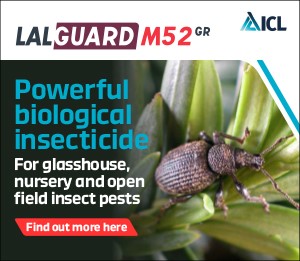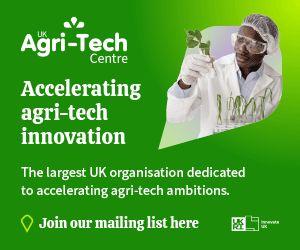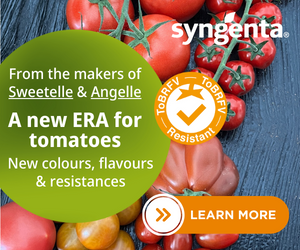In August 2022, Defra announced plans to ban the use of peat in the amateur sector in England and Wales by 2024, and more recently announced a ban of peat use in the professional sector, with certain exemptions by 2026, followed by a complete ban on the use of peat in horticulture by 2030 (other than non-time limited conservation exemptions).
The total replacement of peat in horticulture is expected to be achieved by using a blended range of materials rather than relying solely on one or two main ingredients, not least due to availability of alternative materials. Where proprietary peat-free growing media blends have been used with success on nurseries, growers have adapted irrigation, nutrition and mechanisation to suit the blends used.
A series of demonstration trials using proprietary peat free growing media were carried out by the Bedding and Pot Plant Centre during 2021 and 2022. Commercial quality plug plants and bedding and pot plants were successfully produced in all peat-free growing media tested, across a range of irrigation systems: sub-irrigation (ebb and flood) and overhead systems (boom and hand watering via hose and lance). This article highlights how to adjust growing practices to get the best from peat-free blends.
The Bedding and Pot Plant Centre produced a body of work funded by the AHDB between 2014 and 2023. Final reports and briefing notes have been completed and can be accessed online: PO 019d The Bedding and Pot Plant Centre – new product opportunities for bedding and pot plant growers.
Trials on commercial nurseries
The trials explored the use of peat-free growing media in bedding and pot plant propagation (Earley Ornamentals) and pot plants (Hills Plants), and then charted the production of a range of bedding and pot plants from propagation, through production to marketing in hanging baskets (Arden Lea Nurseries) (Table 1).
Table 1. Bedding and Pot Plant Centre peat-free demonstration trial details, 2021-2022
| Year | Sector | Species | Links | |
| 2021 | Bedding and pot plant propagation
(overhead irrigation) |
Seed-raised | Antirrhinum ‘Sonnet’
African Marigold ‘Antigua’ Cosmos ‘Sonata White’ Geranium ‘Horizon’ Mimulus ‘Mystic’ Pansy ‘Premier’ Petunia grandiflora ‘Espresso Grande’ |
Report 2022 |
| Cutting-raised | Senetti ‘Deep Blue’ | |||
| Pot plant production
(sub-irrigated) |
Cutting-raised | Calathea roseopicta ‘Silvia’
Ficus benjamina ‘Exotica’ |
||
| 2022 | Bedding and pot plant propagation
(overhead irrigation) |
Seed-raised | Dianthus barbatus ‘Festival Deep Red’
French Marigold ‘Durango Flame’ Petunia ‘Frenzy Plum Bicolour’ Verbena ‘Quartz XP Silver’ |
Report 2023 |
| Cutting-raised | Bidens ferulifolia ‘Golden Empire’
Nemesia ‘Burgundy’ Petunia ‘Capella Burgundy’ |
|||
| Bedding & pot plant production
(overhead irrigation) |
Seed-raised | Dianthus barbatus ‘Festival Deep Red’
French Marigold ‘Durango Flame’ Petunia ‘Frenzy Plum Bicolour’ Verbena ‘Quartz XP Silver’ |
||
| Cutting-raised | Bidens ferulifolia ‘Golden Empire’
Nemesia ‘Burgundy’ Petunia ‘Capella Burgundy’ |
|||



Tips for successful production in peat free growing media
Irrigation
- Growing media is designed for specific production systems and should be selected to suit the nursery production and irrigation system (e.g. sub or overhead irrigation), and the plant species in production.
- The source of materials (i.e. manufacturer) and the way they are produced (e.g. particle size, how fibrous the final product is) can cause the growing media to perform differently, particularly in terms of water holding capacity. For example, wood fibre from two different manufacturers will use wood from different species with different provenance, manufactured under different conditions, and as a result they will perform differently. Water management should be adjusted to produce conditions suitable for the plant species being grown, grouping plants with similar requirements.
- In propagation, encourage strong root development through careful attention to watering (not too wet), adjusting water management to suit plant species and consider allowing slightly longer for roots to develop before transplant to improve plug integrity. Remember, the surface of peat-free media dries out more quickly than peat. Getting the irrigation right in peat free growing media requires attention to detail and can be of fundamental importance to successfully transition to peat free production. Applying irrigation little and often seems to work well, allowing crops to dry back between irrigation cycles.
- Trial new peat-free or peat-reduced growing media before widescale use to fully understand the best water management techniques for each substrate and plug performance at transplant. We found that plug integrity differed between the various media tested.
- No growing media will deliver optimum performance if overwatered – ensure that peat free growing media is not overwatered.
Nutrition
- Use nutrient analysis to check all new substrates and irrigation water prior to use and adjust your nutrition programme accordingly. Frequency of growing media analysis is best determined by individual nurseries using a risk-based approach based on experience and the results of previous growing media analyses.
- Peat-free growing media tends to exhibit higher electrical conductivity (EC) than peat-based media and this may have to be accounted for in fertigation regimes. Elevated EC can cause root damage to young plants and more sensitive species. Handheld EC meters are a useful tool that growers can use to quickly check EC on site, and the information generated can help to inform crop management decisions. Care should be taken when growing sensitive species such as Antirrhinum, Primula, Begonia Rex and Poinsettia. Materials such as composted bark and green compost (more commonly used in retail growing media) offer a greater buffering capacity than peat, which can reduce the impact of higher EC.
- pH in peat-free mixes can be higher than targets for traditional peat-based mixes (5.5 – 6.0). This can affect plant quality as nutrients become unavailable to plants, particularly to sensitive species such as For example, iron is less available at high pH and this can cause leaf chlorosis. Use nutrient analysis to check the substrate pH is within specification and discuss any issues with the manufacturer and adjust accordingly.
- There are physical benefits of using alternative substrates to peat, however. Materials such as bark can provide a greater buffering effect which can help to protect plants against high salt / pH levels. Work with the growing media manufacturer to develop a suitable specification for your crop and irrigation / production system.
Mechanisation
- Peat-free blends tested in these trials were suitable for use in potting machines, but flow rates may need to be adjusted to achieve the best fill.
- The tray/pot/pack filling machine may require adjustment depending on growing media moisture content. The moisture content of the substrate can affect the speed of container filling; flow rate is slower for moister materials, which if not properly managed can result in under-filled containers.
General comment
- Remember to store all growing media in a cool, dark place and use as soon as possible. Check with your supplier regarding storage conditions and shelf life.
- Retain a sample of each growing media mix supplied for analysis should any issues arise; if your mix contains controlled release fertiliser (CRF), growing media samples are best refrigerated.













